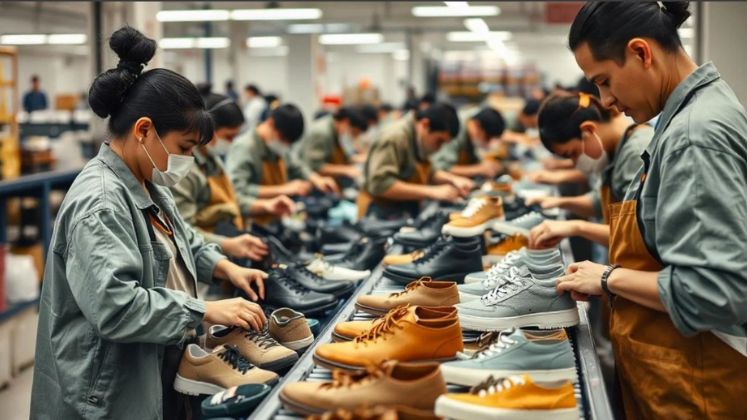
Data from the General Statistics Office (GSO) shows that Vietnam’s footwear industry is growing at an impressive rate in 2024, with exports totalling US $ 16.53 billion in the first nine months of the year, representing a strong 12.5 per cent year-over-year gain.
Thanks to this accomplishment, footwear is now one of the top five exports from the nation and one of just seven goods to reach the US $ 10 billion level.
As demand from both domestic and foreign customers rises before the peak production season at year’s end, Vietnam’s manufacturing sectors—particularly textiles and garments—are experiencing a broader recovery, which is reflected in the remarkable surge in footwear exports.
The Vietnam Leather, Footwear and Handbag Association has noted severe labour shortages that present difficulties for the industry despite the encouraging trends. The association’s vice president and general secretary, Phan Thi Thanh Xuan, underlined the importance of having a qualified staff in labour-intensive sectors like textiles and footwear. A major obstacle to increasing output and satisfying the growing demand for goods is the present labour shortage.
Xuan, however, was upbeat about the industry’s future, pointing out that the double-digit growth rate is a positive trend for the year. According to current estimates, the leather and footwear industry is expected to reach its ambitious goal of US $ 27 billion in export income by the end of 2024.
Throughout 2024, Vietnam’s footwear exports have stayed robust in important international markets. The sector is addressing supply chain risks, especially with regard to raw material acquisition, in addition to labour constraints. Xuan said at a recent event on the Comprehensive and Progressive Agreement for Trans-Pacific Partnership (CPTPP) that the group has proposed the creation of a raw material trading centre to the Ministry of Industry and Trade.
By improving Vietnam’s capacity to obtain the resources required to satisfy global export requirements, this program aims to considerably lessen the industry’s present dependency on imported raw materials, which make up 65 per cent of production expenses. With plans to boost Vietnam’s fashion industry to US $ 100 billion by 2030, the proposal could expedite production procedures, increase order fulfilment rates, and pave the way for faster growth.






